Python Automation Testing
Python continues redefining automation testing, with its thriving features making it an adapt tool in software development. This section expounds on the rationale behind its growing popularity and the key features that support its use in automation testing.
Python’s growing relevance in automation testing roots in its simple, readable syntax. Coupled with the clear structure and ease of learning, Python reduces the time to initiate test setups, increasing a tester’s productivity. Moreover, it has an extensive collection of testing frameworks, that yield specialized testing environments. Be it a web application or a simple function, Python toolkits like PyTest, Robot Framework, behave, fulfill diverse testing needs. For instance, Robot Framework supports acceptance level testing while PyTest offers a comprehensive testing tool for simpler tests.
Python, unlike other programming languages, hosts a set of unique testing capabilities. Key among them is Unit Testing, a seamless way of checking if individual functions of the software are operating correctly. Python offers an in-built test module, unittest, that simplifies this process without additional installations.
Another notable feature is its compatibility with Selenium, a commonly-used software testing framework for web applications. Python harnesses Selenium’s functionality to write robust and scalable test cases, contributing to consistent and repeatable test results.
Also worth noting is Python’s script-friendly nature. It allows testers to write data-driven test cases, handling complex scenarios efficiently. Multithreading capabilities, hand in glove with its script nature, make it a fitting choice to handle heavy-load testing. For example, using Python’s threading module, a tester can simulate multiple clients sending requests simultaneously, providing an effective way to stress test a system.
Starting With Python Automation Testing
Delving into Python automation testing begins with setting up the testing environment and creating the first test script. Python’s robustness and user-friendly nature, which have been previously discussed, aid in this initial set-up process.
Creating an ideal testing environment underscores Python’s capabilities. Given Python’s extensive library support, testers can utilize frameworks like Pytest or Robot Framework for test automation—both of which provide powerful testing capabilities. Python’s virtual environment (venv) serves as an isolated workspace, allowing different projects to maintain separate dependencies without conflicts. Testers install Python, the requisite packages, and the preferred IDE into this segregated space, concluding the environment setup procedure. An example of a Python testing environment setup is as follows:
- Installation of Python: Ensure the latest Python version is installed.
- Establishment of a virtual environment: Use the venv module to create a Python virtual environment.
- Installation of Packages: Install necessary libraries, including PyTest and Selenium, amongst others.

With the testing environment set up, scriptwriting commences—a process facilitated by Python’s simplicity. Python’s scripting syntax, clear and concise, eases the writing of test scripts. Here, code snippets illustrate creating a simple PyTest function that asserts a statement. The tester writes a Python function starting with the word test_, a convention followed by PyTest to identify test functions.
For example, a basic test script is:
def test_example():
assert 2 + 2 == 4
This test script illustrates Python’s intuitiveness and user-friendliness, with the function confirming the sum of 2 and 2 equals 4. When run, if the assertion is true, PyTest marks the test as passed, demonstrating Python’s efficacy in automation testing.
Advanced Python Automation Testing Techniques
Diving deeper into the realm of Python automation testing, this section uncovers advanced testing techniques, embodying data-driven testing and behavior-driven development, which further demonstrate Python’s testing prowess.
Data-Driven Testing (DDT), an integral component of Python automation testing, empowers concise testing with a vast array of dynamic data. Python, coupled with libraries like PyTest, simplifies the implementation of DDT. Utilizing just a single test structure, DDT accomplishes testing multiple data sets, enhancing test coverage and efficiency.  By parsing data from external sources such as CSV, XML, or a database, DDT significantly reduces code duplication, streamlines maintenance and ensures high scalability. Consequently, DDT enables the creation of robust and resilient test suites, amplifying Python’s automation testing capabilities.
By parsing data from external sources such as CSV, XML, or a database, DDT significantly reduces code duplication, streamlines maintenance and ensures high scalability. Consequently, DDT enables the creation of robust and resilient test suites, amplifying Python’s automation testing capabilities.
Python, renowned for its readability, naturally cater to Behavior Driven Development (BDD). It’s an agile software development strategy that encourages collaboration between developers, testers, and non-technical or business participants. Libraries such as Behave, Lettuce, and Radish support BDD in Python by enabling testing based on natural language specifications.

